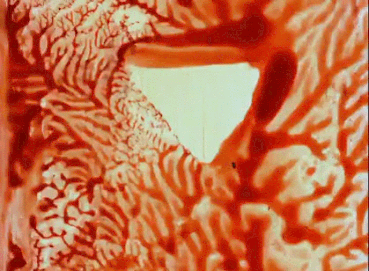
‘In 1935, the British General Post Office commissioned an advertisement from the New Zealand–born artist Len Lye, who was based in London at the time. The resulting film is a mere four minutes long, a small gem of an animation titled A Colour Box that sends a joyful riot of dots and lines dancing across the screen to a festive soundtrack of beguine, a jazz-inflected type of West Indian dance music. It’s hard to imagine just how gratifying the protopsychedelic film would have been to watch in the midst of the Depression, but it enjoyed a wide run as a preview reel that played before commercial features. To produce the film, Lye forwent the camera and instead used metal mesh grills or stencils to apply paint directly onto strips of clear celluloid. Extremely economic in its means, this technique would prove extraordinarily influential to future experimental filmmakers. Watching it now, in its stunning, newly digitized format at the Museum Tinguely in Basel, the film seems as innovative as ever, and more prescient than many early critics might have realized.
‘A Colour Box is a milestone in animation history and remains one of Lye’s best-known films, a raw and vivacious counterpoint to Oskar Fischinger’s studious “optical poems” from the same period. In the wake of its success, Lye was invited to make special effects for the train-crash scene in Alfred Hitchcock’s Secret Agent (1936). He designed an animation that would give the impression that the flames of the collision were so hot that the celluloid in the projector itself had caught fire. Allegedly, the effect was so realistic that at a preview screening, the projectionist panicked. Hitchcock cut Lye’s effects, fearing that they would cause uproar in commercial cinemas. Is all this true? It is difficult to say, but the tenor of the story, of an almost-triumph undercut by chance misfortune, characterizes much of Lye’s life.
‘The outbreak of World War II brought an end to the modest commissions that Lye received. To get by financially during the war, he made a couple of truly awful propaganda films. Destitute, homeless, and physically sick, Lye became convinced that it was not enough to fight against fascism. One had to fight for something. And so was born his manifesto, “Individual Happiness Now” (or IHN). Mobilizing his own feelings of personal helplessness, Lye demanded that the full resources of industrial society be dedicated to the sustained cultivation of each individual. He would go on to formulate versions of this initiative in collaboration with his friend the poet Robert Graves. The cheerful hubris of IHN—which, among other oddities, advocated for the British government to establish a “Ministry of Happiness”—would find both its fulfillment and its frustration in later consumer society, but at the time it was mostly met with polite indifference. Lye thought he had persuaded Wendell Willkie, a failed US presidential candidate, to support a film about IHN, but before any explicit agreement could be made, Willkie died of a heart attack. So it went.
‘By the time Lye made the four-minute film Free Radicals (1958), John and James Whitney had already begun reconfiguring the M5 antiaircraft-gun director with which they would famously make their own pre-digital computer animations. Thus, while the film might have been perfectly in sync with the emerging hipster counterculture, technically speaking, the artist was no longer ahead of any curves. Just before his death, Lye would revisit the techniques of Free Radicals to create Particles in Space (1979). Both are extraordinary, spare yet energetic, scratched into black film stock and set to ethnographic recordings of African drumming. Poetically, they are his most mature work.’ — Adam Jasper
____
Stills

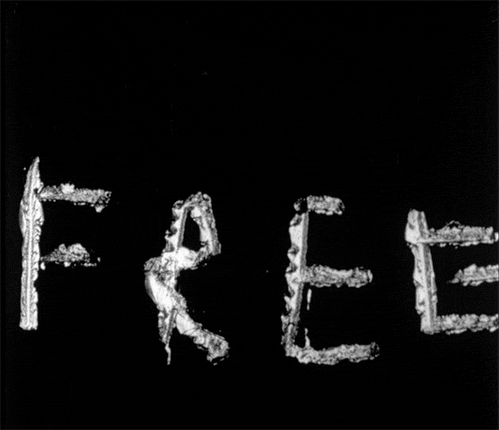

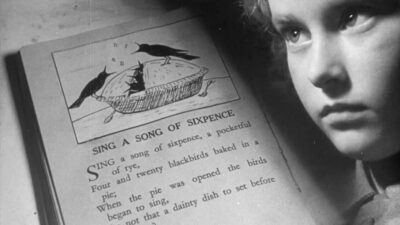
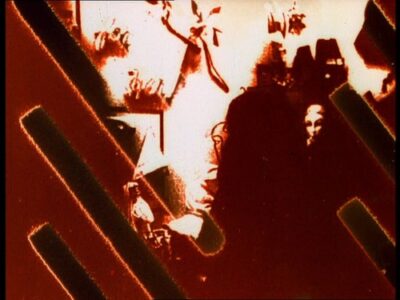
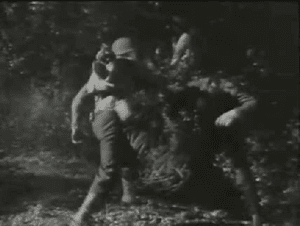

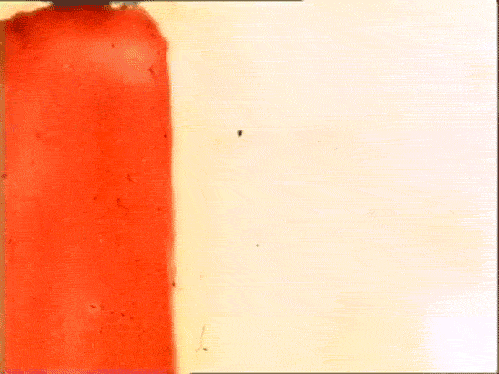
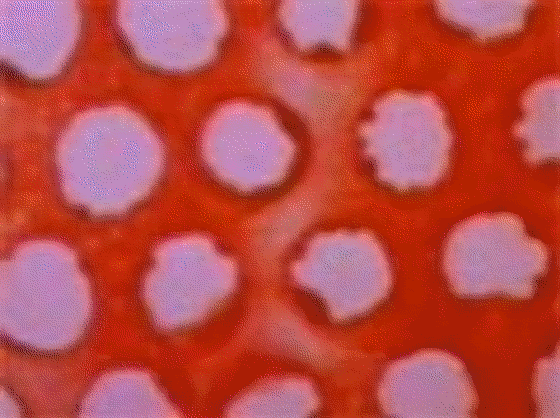
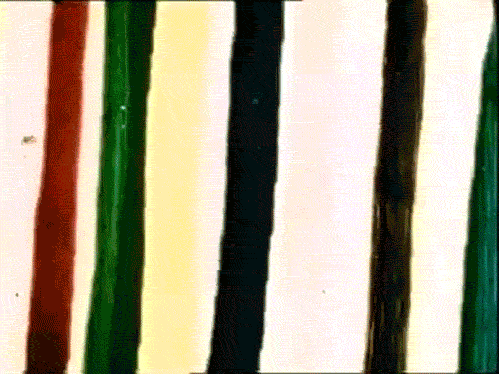
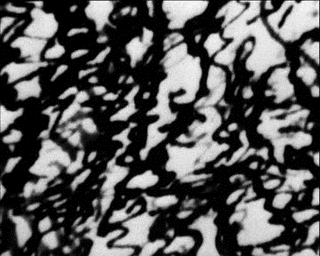
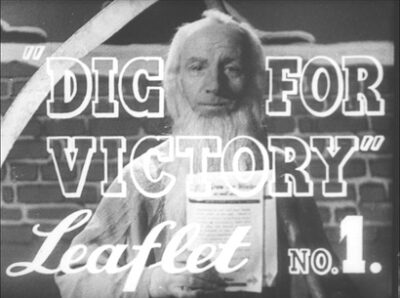

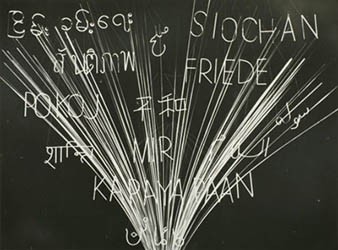
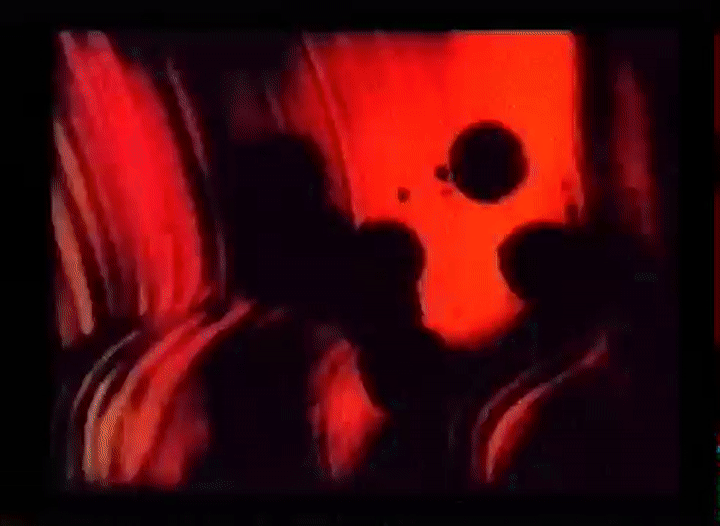
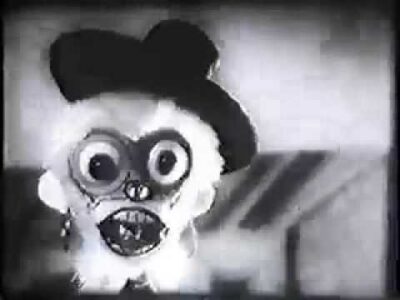
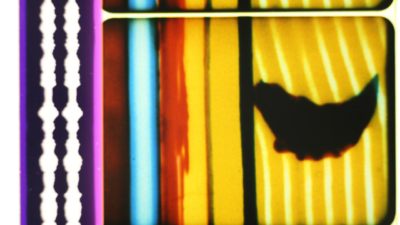

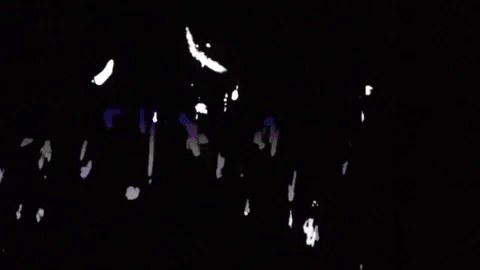
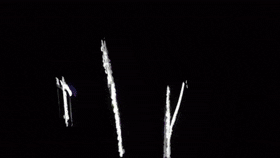

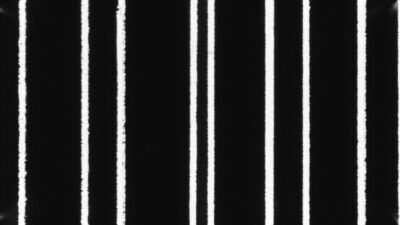
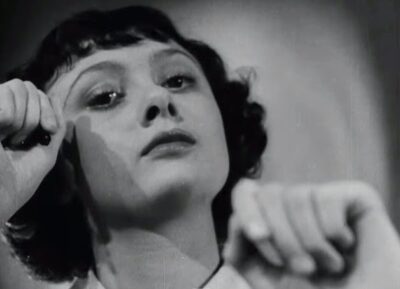
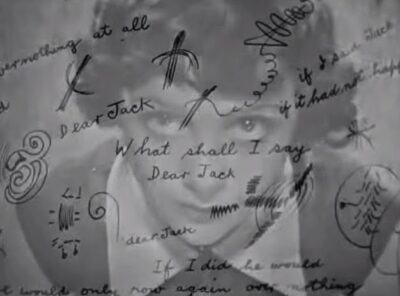
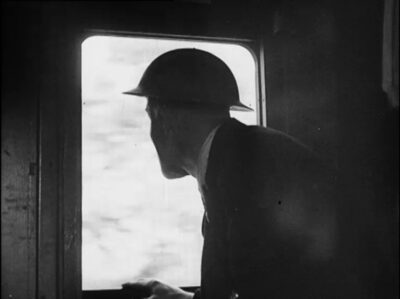
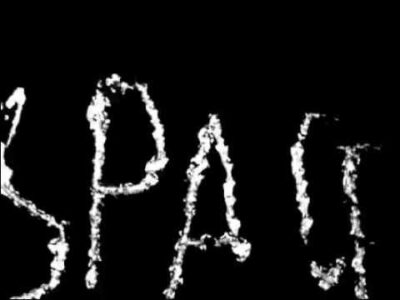
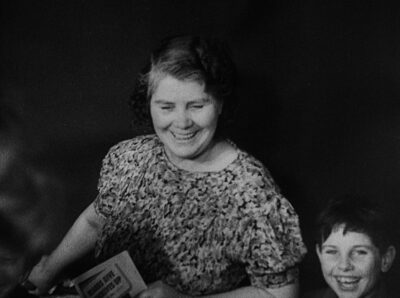
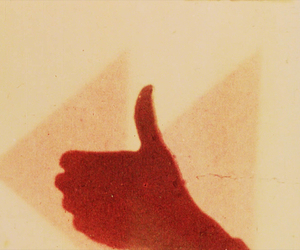
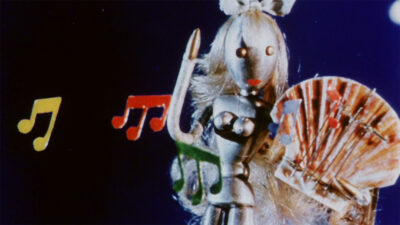
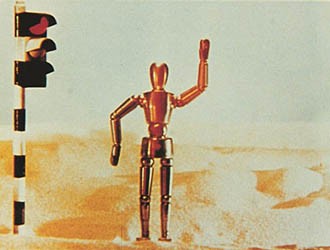
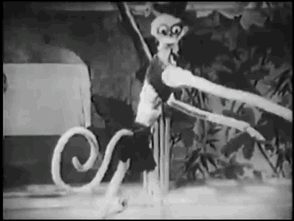
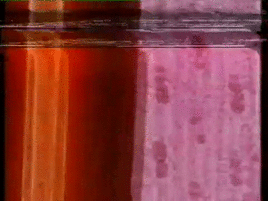
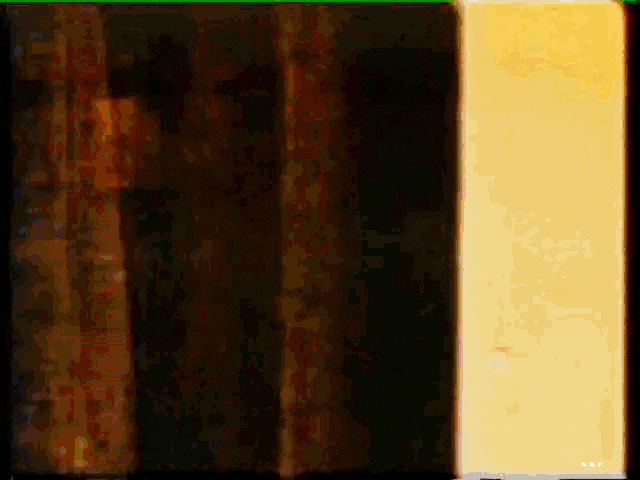
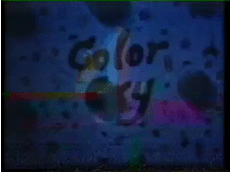
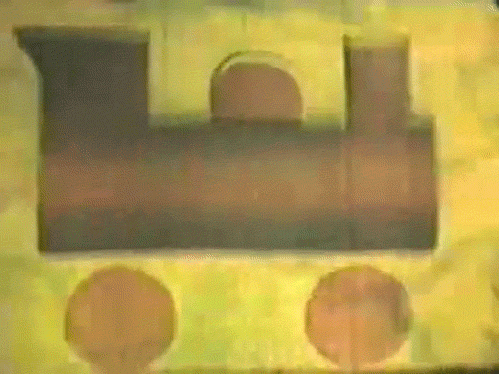
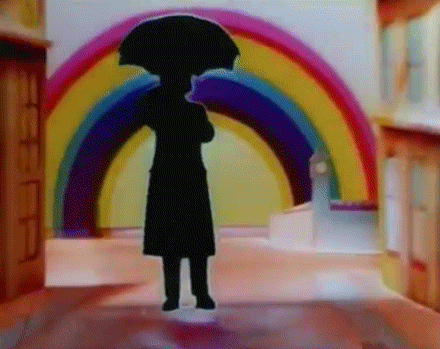
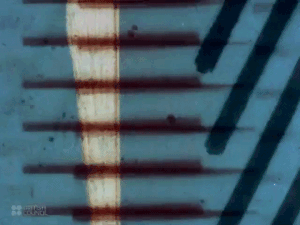

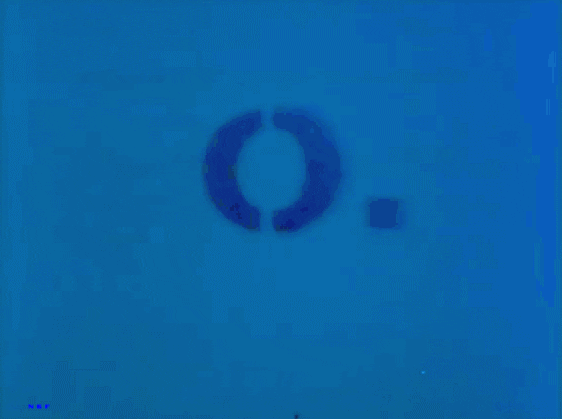
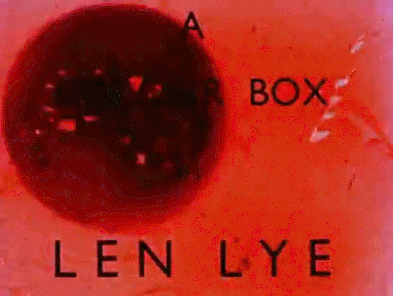
____
Further
The Len Lye Foundation
Len Lye @ Senses of Cinema
The world of Len Lye
Len Lye @ Light Cone
Len Lye @ IMDb
Len Lye – Motion Composer
LEN LYE: “The least boring person who ever existed”
Len Lye: Stopped Short by Wonder
Len Lye’s Kinetic Experiments: Sounds of Sculpture
Len Lye kinetic work realised decades after idea created
Len Lye: The Vital Body of Cinema
In and Out of History: A Century of Len Lye
Book: The Long Dream of Waking: New perspectives on Len Lye
Dries Van Noten On Len Lye, Gardening & Reforming The Fashion System
Len Lye in his own words
The Emotional Pull of Len Lye’s Motion Sculptures
Len Lye: The Dynamism of the Present Moment
On Len Lye’s Kinetic Film Theory
Len Lye, The Body Electric
____
Extras
Len Lye: Experimental Moves, An Interview with Evan Webb
Len Lye Talks About Art – Art of the Old Brain
Len Lye Super 8 – NYC 1980 – silent film
_____
Interview
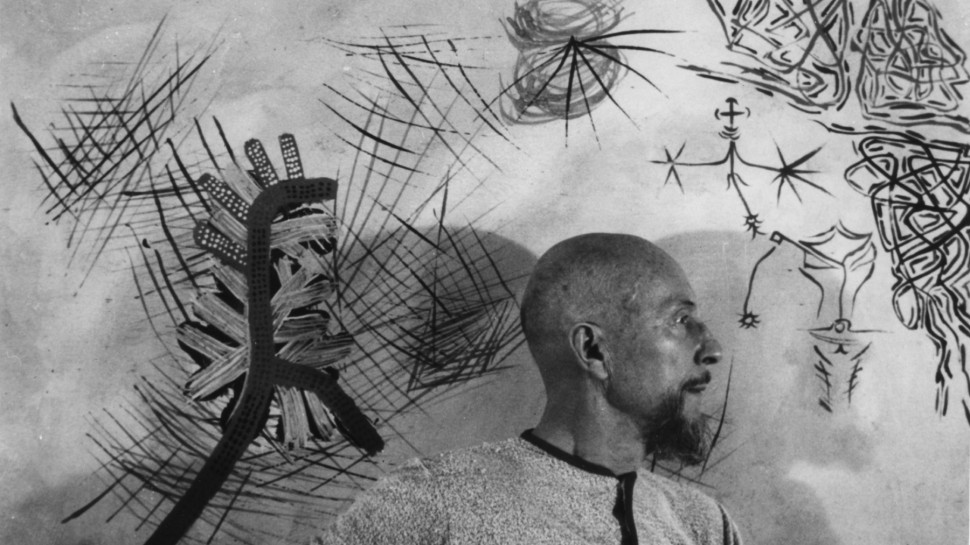
Len Lye: Tusalava? I shot the goddamned thing. It – you had to turn the crank shaft of the camera, you know, like you turned the old Ford motor. You’ve got to turn that absolutely evenly. But the fact that you’re turning it one exposure at a time – you’re giving it one turn with your hand with this handle you’ve got on the camera, you then put on another cartoon paper and you come back. Well, you haven’t got the same rhythm in the turn, so that the speed of the turns fluctuates like mad, and you come out with some – with the final negative – some are overexposed, some are underexposed, they’re not very even, see? So, if you’re expecting a work of art, technically it’s a lot of absolutely dumb cluck. But, it’s all right to prove that you did it. It’s got those shapes. . . I remember that Tusalava was mentioned in that little book of letters of mine, that No Trouble book. So. Ah, around that time I was living on a barge and I had access to a studio. Also I’d rigged up a table at work – evening work I was doing. And could do all the drawings for Tusalava. It was a ten minute film and there are sixteen drawings to a second, so, you know, it was pretty interminable. So you waltz along trying to get this darn thing done and soon you become absorbed. Now this is the psychological gimmick in this thing: simply that you are so completely and incessantly absorbed with your sense of self in relation to drawing some bloody imaginary grub, the witchetty grub, and you’ve never seen a witchetty grub so you don’t know what the hell you’re drawing except you like what you’re doing because it seems to have a peculiar life of animation, you know. Grub. This was a – instead of a spastic grub, it was a goddamned drugged grub. It was dopey. It wouldn’t move at all half the time. So when I tried to push this grub around with my drawings – you know, finding my way. Because I’d never animated anything at all; I’d just learned how to do it in Australia, never practised it. Just watched the older guys doing it while I did story boards. For Beeswax and chewing gum and things like that. In Sydney. And I would’ve been doing it in New Zealand if there’d been any cameras around. So. The actual doing – the point I’m going into in this long-winded way is simply that my sense of sound, like any artist’s when he’s imbued with technically transferring something out of his innermost self on to, into his medium – on to canvas, on to film, – you must be communing with your intuition about significances. Well, I’m saying that’s the only explanation I’ve got for the reason Tusalava was riddled with a genetic polarity illustrative of the life-death polarity. And, on a completely factual plane, it subsequently turned out that all the images I drew are images which have been subsequently found with an electronic microscope. In actual life my witchetty grub was the spitting image of an antibody. And, then, when later in the film this antibody shape, this grub shape, broke in half and one half swallowed the other half, then it developed into a huge; menacing octopus sort of thing with a sharp tongue which stabbed at a something in a cocoon shape, a kind of totem – it was a totem of individuality – I think now – this totem was stabbed at by this octopus – as I thought of an octopus, a cross between an octopus and a spider, if there was such a mating possible – and this peculiar turnaround of the original witchetty grub into a kind of meanacing thing has always puzzled me. I thought, well, I must’ve missed a cog somehow and my Old Brain, my intuitive self, must’ve got screwed up someway, until very recently, just about 3 or 4 weeks ago, I came across a long article in the New York Times reporting on the discovery that antibodies sometimes turn into scavengers, and into microphages, and turn on the body and attack it instead of being a protector of the body, see.
Wystan Curnow: Yes, I was interested that even in No Trouble you refer to the images in Tusalava as molecular.
L.L.: No kidding.
W.C.: You do, so that’s 1930. So you were already thinking – I mean at the time of doing it, you clearly had some thoughts of its relation to cell-structure.
L.L.: That’s right. Without even seeing them, because electronic microscopes weren’t around then I don’t think. Whether or not they were around doesn’t matter because I hadn’t seen them. As a matter of fact I only work with the feeling of something magical, something seemingly significant. And to keep it magical I don’t want to know the story involved, I just want the hypnotic effect of it somehow seeming significant without knowing why.
W.C.: Do you want to take a break?
L.L.: Yeah, that’s a good idea.
W.C.: I mean, I’m loving this, but it’s work for you.
L.L.: No, no. It’s time you had something to eat. Look, it’s about half past two pretty nearly. I could give you something right now, or we could go outside for a break.
W.C.: Let’s go outside for a break. How did the connection with Robert Graves come about?
L.L.: Well, after I’d been in London, I grabbed a little room to rent in Chelsea. I smuggled my carvings, which I did in Auckland – marble and terra cotta – I did some terra cotta and so on in Sydney, you see. I went from Sydney. I got the ship’s papers off a fellow named Tom Harris. You paid 5 pounds and bought his papers from him. He was going to jump ship, and didn’t want them anyhow. But you can sell those things, so he sold them to me. And I got his job. He was a trimmer on the liner Euripedes. That’s a White Star Liner, 22,000 tons. So I got this job. I took aboard with me a wooden case, that had my sculptures, my belongings and everything. Because I had heard about Brancusi wasn’t allowed in the US. . .
W.C.: So you knew about Brancusi in Sydney. . .
L.L.: Oh, yeah. I tell you, I got it right from the library. I knew about the Futurists, I knew about the Fauves, I knew about everything that was going. That’s why libraries are an absolute cinch for kids. You’ve just got to have them if you want social evolution. How the hell are you going to get it evolving? So you start where the other guy left off, in evolution. So. I smuggled in my stuff. I waited till all the other people – we got paid off, I didn’t jump ship in London. I fulfilled what’s his name’s, Harris’s, assignment by getting back to London. It was holy hell on that boat, because all the coal was soft and it all shifted about in a storm – 22,000 tonner, that’s a helluva sized boat, White Star liner – had a list and we went very slow. It took nine weeks to go from Sydney to London. And there I was sweating, shitting bullets! You know, I only shat about twice the whole trip? You just sweat it all out. Fantastic! And you had great corns on your hands.
W.C.: You were shovelling coal, then?
L.L.: Shovelling bloody, goddamned coal. Sweating it out. Because the stoker used it up faster than it could be brought to him. The ship had a list, and all the planks to go on to get the rotten coal had a slight slant to them, see? And you rolled, you went right off that goddamned plank with the iron barrow full of bloody dusty coal, you know? Just dust. The damn stuff. Soft coal. So you’re smothered in, breathing this dust. You’re scrambling. You hope to hell your shin is still there because it feels as if your leg’s been cut off when you hit the edge of that steel wheelbarrow. And these stokers and trimmers were crying with frustration, just cursing and crying with frustration – it was just murder. So, anyway, you get into London. The trip took 9 weeks.
W.C.: You had this crate.
L.L.: Yeah. I went out and found the guy with the horse and cart. There was a van, kind of covered in canvas, van. Just the usual four wheels. Short little van. And I made a bargain with him for five bob: would he take me through the gate with my crate. He said, sure. So, you go back, get your crate, get another guy to help you down with this crate, and this guy waiting with the horse and stuff, and you put it into his van, pull the van canvas over it, and the cop tells you to – what you got in there? It’s something to do with an assignment of something. So the van man is really my cover man and he smuggled this stuff through. There was no need to smuggle it after all. But I was playing safe. You go up and you say: Well, I’ll make it extra if you’ll take me down to Chelsea. So, it is a helluva long way. So, then, I get him to wait on the corner of the street while I go around and look for a room to rent, you see? So I find a little room, and he helps me into the room with this bloody great crate. Then I go around all the people I knew: Frank Dobson, Epstein, and – whoever the hell the others were at the time. Sculptors, see? So I would take along my little hunk of marble, my little tiki that I had, and you go and say: I’m from New Zealand, I’ve always admired your work, and one thing and another. Of course, they’re tickled pink, and they give you a cup of tea. You tell them you need a decent room down Chelsea or something, and what do they reckon, and so on. This was Chelsea, but I wanted to get out of Chelsea and its art stuff. I wanted to get where, you know, I could just settle down and work.
W.C.: That was the idea about going to London? You thought you’d have a fair chance to work in London?
L.L.: That’s right. Same as you come to New York. So, as I’ve told you about the saga of learning to dance on the ark, the monkey barge. I think it was called a monkey barge because it was a narrow, slim thing. Couldn’t swing a monkey round in it, cat or whatever. So. I got this barge. Then, Eric Kennington and his wife Celandine would occasionally bring down people. And Robert Graves was a great friend of Eric Kennington’s. Kennington’s the guy that did the portraits that are in The Seven Pillars of Wisdom. And they would bring down these guys: Lawrence, Bernard Shaw – all names, you know. Of course, Robert was in the name bracket. And I met them all and couldn’t care less about it all, you know. I was pretty wild and woolly. And then I started to make these Batiks because the studio (of Kennington) was right next door to a place called Footprints, and Footprints made printed fabrics on the William Morris principle of home crafts and one thing and another.
W.C.: This is just in passing, but it completes a bit we talked about before. There’s an article on film that’s co-authored by Laura Riding and you in Epilogue……… .[pause to change tape]
L.L.: How about a little beer? A Guiness or something?
W.C.: No. I’m fine. , don’t think we’ll go on very much longer.
L.L.: No, you haven’t got much time. Look what the time is: six to five. And we’ve got a big party on tonight. They want us there at six. If we don’t get there they’ll have the booze drunk. And everybody lined up with various girls, there won’t be a bloody chance.
W.C.: I guess what we were talking about when it switched off was this colloquial aspect of the writing. Which I like. One of the things that’s happened with modern writing is the much greater interest in writing as speech. Your writing seems fresh in that sense. Because it is colloquial. It’s the living language, the language which is in the mouths of people.
L.L.: I’ll tell you, I could speak that stuff better than I could write it. Because people who have any kind of propensity for that zig-zag, back-to-front type verbalising try to rule it out. I had the propensity for speaking that way. I was only too delighted to let it go full out and romp away to its heart’s content. See?
______________
15 of Len Lye’s 28 films
______________
Tal Farlow (1980)
‘Lye created a series of black-and-white scratched images in the 1950s that were more regular and geometric than those of Free Radicals. He combined them with “Rock ‘n’ Rye”, a piece by jazz guitarist Tal Farlow. At that time Lye did not complete the project. He returned to it in 1980 but died before he could finish synchronizing his images to the music. His assistant Steven Jones completed the editing under the supervision of Lye’s widow Ann (who had been closely involved with all of Lye’s American films).’ — O.W.
the entirety
______________
Particles in Space (1966)
‘Lye completed his last great film a few months before his death at the age of 78. The film returned to the black-and-white techniques of Free Radicals. Lye created what he called “vibrant little images” or “zig-zags” with a sense of “zizz”. The clusters of small scratches gave the film a unique texture – the images looked rough but were in fact extremely subtle. The title Particles in Space referred to flashes of energy of the kind sometimes seen by astronauts in space. The soundtrack combined “Jumping Dance Drums” from the Bahamas with drum music by the Yoruba of Nigeria and the sounds of Lye’s metal kinetic sculptures. The opening titles demonstrated Lye’s mastery of the scratching of letters and words on film, a method imitated by other film-makers such as Stan Brakhage.’ — LLFoundation
the entirety
______________
Free Radicals (1958)
‘Some critics regard this as Lye’s greatest film. He reduced the film medium to its most basic elements – light in darkness – by scratching designs on black film. On screen his scratches were as dramatic as lightning in the night sky. He used a variety of tools ranging from dental tools to an ancient Native American arrow-head, and synchronized the images to traditional African music (“a field tape of the Bagirmi tribe”). The film won second prize out of 400 entries in an International Experimental Film Competition judged by Man Ray, Norman McLaren, Alexander Alexeiff and others, at the 1958 World’s Fair in Brussels. In 1979 Lye decided to shorten this already very concentrated film from 5 to 4 minutes. Stan Brakhage described the final version as “an almost unbelievably immense masterpiece (a brief epic)”. “I made Free Radicals from 16mm black film leader, which you can get from DuPont. I took a graver, various kinds of needles. (My range included arrowheads for romanticism.) You stick down the sides with scotch tape and you get to work with scratching the stuff out. … … You hold your hand at the right height and act is if you were making your signature. It goes on forever. You can carry a pictographic design in your head and make a little design. You can’t see what you’re doing because your hand is in the way. That’s why those things have that kind of spastic look.” In 2008 Free Radicals was selected by the U.S. Library of Congress as a “classic film” that it would “preserve for all time.”’ — O.W.
the entirety
_______________
Life’s Musical Minute (1953)
‘In 1944 Lye moved to New York to take up a job directing for the March of Time, a current affairs series. He settled in New York’s West Village and mixed with the artists who would later be known as the Abstract Expressionists (or “New York School”). He encouraged young American film-makers such as Francis Lee and Ian Hugo, and he taught film-making with Hans Richter. Unfortunately the March of Time series came to an end in 1951, leaving Lye out of work. He tried to create work for himself by making sample television ads. Unfortunately, the American corporations and advertising agencies he approached were not interested because they regarded his approach as too avant-garde. Unlike his friend Norman McLaren, who gained support for his experiments at the Canadian Film Board, Lye could not find any sponsors for his films in the USA. Despite countless rejections, he continued to make demos (sample films). Life’s Musical Minute, recently re-discovered, is a short promotional film of this kind, based on Gene Krupa’s drum solo from “Golden Wedding” by the Woody Herman jazz band. It was Lye’s attempt to gain support from Life Magazine.’ — O.W.
the entirety
______________
Kill Or Be Killed (1942)
‘Kill or be Killed is a fictional enactment of the deadly contest between a British soldier and a German sniper hiding in a tree. Lye wrote to Robert Graves: “I just made a simple film – The War, as played by a Lovat scout versus a German sniper – and it is 18 minutes of crawling and jumping.” Kill or Be Killed differed from most army instructional films because of its powerful dramatization. The film alternated the point-of-view of each protagonist. Documentary News Letter’s reviewer wrote: “Here warfare is reduced to a primitive, man to man contest, in which the colour of a leaf, the sudden movement of a horse, the keenness of one’s eyes or ears, may mean life or death…. The film has the very magic of cinema in it, every legitimate device has been used with an integrity that is rare in film making….It is well worth your while to hunt it out – that is if you don’t mind being shaken up, frightened and fascinated.”’ — LLFoundation
the entirety
______________
Swinging the Lambeth Walk (1940)
‘Inspired by a song in 1937 musical Me and My Girl, ‘The Lambeth Walk’ was a popular dance named after a working class area of London. Kiwi-born filmmaker Len Lye edited together different versions of the song (including Django Reinhardt on guitar and Stéphane Grappelli on violin) for this short film, which is an early forerunner to music videos. Lye combined the music with various abstract images, painting and scratching directly onto the film stock. The colourful, dynamic piece of animation was made with public money — from the United Kingdom’s Ministry of Information — scandalising some bureaucrats at the time.’ — nzonscreen
the entirety
_____________
Colour Flight (1938)
‘This riot of colour was a showcase for Lye’s hand-painted and stencilled imagery. Like other experimenters of the 1930s (such as Oskar Fischinger), Lye financed his films by finding an advertising sponsor – in this case, Imperial Airways. The soundtrack is a rhumba by the Lecuona Cuban Boys and Honolulu Blues by Red Nichols and his Five Pennies. Time magazine ran a story on the film (12/12/38) which hailed Lye as the English alternative to Walt Disney.’ — O.W.
the entirety
____________
N or NW (1938)
‘Lye was someone who could easily turn commissions with an evident promotional goal into artistic adventures that inspired him. In N or NW, the advertising aim of a seemingly conventional, live-action drama becomes an exciting exploration of some of Lye’s life-long obsessions. Through his depiction of letter-writing processes, amorous quarrels, and postal service efficiency, Lye taps into his theory of the relations between the conscious and the unconscious. Or, as he would conceptualize it: the Old Brain (the deepest level of the unconscious, connected to body movement, intuitive knowledge, automatism, and primitive art) and the New Brain (the conscious level, associated with intellectualism, rational thinking, logic and language).’ — MUBI
the entirety
______________
Trade Tattoo (1937)
‘”Trade Tattoo” is a promotional short made by Len Lye in 1937 for the GPO. (‘General Post Office’). The film utilises live action footage, composited so that it blends in and out of Lye’s abstract animation.’ — 95filmforever
the entirety
______________
Rainbow Dance (1936)
‘This live-action film takes the three film strips of the Gasparcolor system and uses them in a highly original way. Lye filmed well-known dancer Rupert Doone in black and white, then added colours as the footage was developed and printed. He also added a variety of painted and stencilled patterns. Rainbow Dance is full of striking effects such as figures that leave behind a trail of coloured silhouettes as they move (like Duchamp’s painting “Nude Descending a Staircase”). Tired of naturalism, Lye mixed live action with cartoon symbols, and combined positive and negative footage. The film was sponsored by the GPO Film Unit on the condition that Lye included an advertisement for the GPO Savings Bank.’ — O.W.
the entirety
_______________
The Birth Of The Robot (1936)
‘This experiment with colourful animated puppets was a “prestige advertisement” for Shell Motor Oil. After using the Dufaycolor process for his previous two films, Lye now tried Gasparcolor, another new type of colour film. Making colour films was still a complex process (involving three separate film strips), but Lye succeeded in creating vivid sequences of movement and a storm scene that critics praised as “proof that the colour film has entered a new stage.” Film-maker Humphrey Jennings was an important member of Lye’s team. The music is an abbreviated version of Gustav Holst’s “The Planets” suite.’ — O.W.
the entirety
______________
Kaleidoscope (1935)
‘Lye’s second direct film was sponsored by Churchman Cigarettes. At the same time his friend Oskar Fischinger in Germany was also financing his great experimental films by making cigarette commercials. In Kaleidoscope Lye animated stencilled cigarette shapes and is said to have experimented with cutting out some of the shapes so that the light of the projector hit the screen directly. He developed a number of stencils such as “a yin-yang, a diamond shape, a wheel, a star” to complement his hand-painted images. The way these shapes spun and rolled across the screen anticipated the movements of his later kinetic sculptures. Like A Colour Box, this film had music by Don Baretto and his Cuban Orchestra.’ — O.W.
the entirety
______________
A Colour Box (1932)
‘Lye’s first “direct” (camera-less) animation combined popular Cuban dance music with hand-painted abstract designs. Screened in many cinemas in Britain, the film had a huge impact because of its novelty and because it divided audiences – some viewers loved it, others hated it. Colour was still a novelty and Lye’s direct painting on celluloid created brilliant colours. The film won festival awards, though some festivals had to invent a special category for this new style of animation. In Venice, the Fascists disrupted screenings because they saw it as “degenerate” modern art.’ — O.W.
the entirety
_____________
The Peanut Vendor (1933)
‘Len Lye created “The Peanut Vendor” in the hopes of being able to start a career in puppet animation, which, perhaps fortunately for us, never happened. In today’s world of horror films, this two-minute work is more terrifying than amusing, as I’m sure it would’ve been intended for younger audiences. All the movie consists of is a creepy-looking monkey puppet singing and asking people to buy his peanuts before they’re all gone, whilst doing a weird dance with his dismembered tail.’ — Tornado_Sam
the entirety
____________
Tusalava (1929)
‘This remarkable animation film was first screened by the London Film Society in 1929. Jack Ellitt’s original piano music for Tusalava has unfortunately been lost. The film imagines the beginnings of life on earth. Single-cell creatures evolve into more complex forms of life. Evolution leads to conflict, and two species fight for supremacy. The title is a Samoan word which suggests that things go full circle. In this film Lye based his style of animation partly on the ancient Aboriginal art of Australia. Tusalava is unique as a film example of what art critics describe as “modernist primitivism”. In contrast to the Cubist painters (who were influenced by African art), Lye drew upon traditions of indigenous art from his own region of the world (New Zealand, Australia and Samoa).’ — Chris Milhuisen
the entirety
*
p.s. Hey. ** David Ehrenstein, Hi. I think you’re not on social media anymore (?), but I highly recommend you ask friends who are there to share the gofundme in those locations because I fear that the results you’ll get via this blog are pretty limited just by the nature of this place. Excited to read the Greene crit. Thanks! ** Misanthrope, Well, yeah, on a writing level, even McCarthy at his weakest trumps a giant majority of everybody else, no argument there. We had a holiday here yesterday, but I never did figure out what it was, and I don’t know how it was marked because everything seemed the same as always. Enjoy the big, empty three days. ** Jack Skelley, Kiddiepunk to the rescue. As always. Well, obviously, I hope the more you settle in there at home the more you’ll fly from the neck up only. Or something. Sabrina and I went over BF’s ‘The Book of Medicine’ yesterday re: the upcoming BF poetry book, and that was great and melancholy. Thanks a lot for the commiserating, man. ** _Black_Acrylic, Ooh, excellent. Carpeting must surely be one of the very final fixes logically. How soon do you think you’ll get in there? ** Dominik, Hi!!! Me too, about reviving it. A little bit of sick is good for this mamby-pamby blog, ha ha. Hm, we actually loved our PGL producer, but maybe he seems more amazing given what we’re dealing with now. Anyway, no, it’s a different guy, although the PGL producer will handle the film’s postproduction (editing, sound work, etc.), and we can not wait until we’re working with him again, i.e. someone trustworthy who actually understands how films need to be made. So far Uriah Heep’s upcoming concert at a bizarrely large venue here in Paris remains an utter mystery. The French do seem peculiarly nostalgic about old music. If there’s an obscure one hit wonder band from the distant past that only includes one original member, if even one, you can bet they’ll play a concert here. I don’t have any tattoos, but I have kind of assumed the painful ‘getting it’ part is an important part, like I assume guys who like getting fistfucked also like the ouchie aspect. Love making the guys who try to earn money by singing songs in the metro stations and trains never sing ‘Those Were the Days My Friend’ or ‘Fire and Rain’ or ‘Peace Train’ or ‘You’ve Got a Friend’ or … I could go on and on, G. ** Steve Erickson, Oh, man, swift recovery! I look forward to reading your new Cronenberg-related thoughts at length. Yeah, right? About the Carl Stone. ** Robert, It’s going reasonably okay w/ me. How about with you? And welcome! Honestly, the sheer volume of books I want to read is still terrifying if not even more so given the waning time available. But it’s also exciting, no? Well, as a fellow videogame addict, especially in the past, I will make a case for how instructive and nourishing they can be. Albeit maybe not at the level of ‘The Recognitions’. You’re reading really great stuff, obviously. People should be paid to read books, especially nowadays. Anyway, good to see you, and keep me up on what’s going on with you and your books and your whatever else, if your feel like it. ** Right. Today the blog presents to you yet another very interesting experimental filmmaker that I think you should have the opportunity to get to know if you aren’t already familiar, so please do take the bait if you’re up for it. See you tomorrow.




 Now available in North America
Now available in North America 
Hello Dennis, a great post once again, I am not very familiar with the career of this artist but I love your proposal. I am experimenting once again with the language, writing in English is almost familiar to me. It is always very interesting, the photographs and others are very interesting. It’s all very experimental but I understand the attraction you feel for this author. I’m not very familiar with it, but everything you expose and how you describe it has a great impact on me. I love it when you make lists of books, movies or music but when it comes to art I’m a bit more confused.
Oh for the GB Post Office to commission an ad from a cool NZ experimental filmmaker these days. Different times I guess.
This new flat is worth getting excited about but I’m wary of the solicitors taking their usual sweet time, even once the building is finished. Still, at least I know I’m welcome to stay here with Mum while I do the waiting.
The new episode of Play Therapy is online here via Mixcloud! Ben ‘Jack Your Body’ Robinson is here to bring you forgotten Italo, new Greek Acid and some obscure Belgian Synth-pop too.
D: : Luv these proto-psychedelic Lyes. Yes, LOL, forthwith I shall fly from the neck up. A cryogenic head on a plane (put me in the overhead with some Xanex), like Walt Disney’s or Pete Davison after Kanye decapitation. And yes,! I’m writing an essay for Sabrina’s Bob Flanagan book & feeling many many many many memories. Last week I got the Planet of Toys demo tape digitized. I can send you — or anyone — the songs once I put them into Mp3 files. Hear & see you soon !!!
Hi!!
Oh, it’s definitely my bad about the PGL producer. I just remember that you used to have problems with someone you worked with on a previous film or project. Shit, now I’m all uncertain, haha. Anyway, it’s good that he’ll handle the film’s postproduction, then.
Hungarian people have this nostalgia too but seemingly only about Hungarian bands – mostly ones that were embarrassingly bad even at their peak.
I’ve never thought of comparing getting tattoos and getting fistfucked but now that you mention it, haha…! There’s that parallel.
Street musicians sing on the actual trains there? I quite like that idea. If they’re good. And don’t sing those songs that make a person’s soul die of boredom and irritation. Love giving you a coupon you can use to turn one of those mentally useless days that feel like swimming in warm oatmeal into a high-energy, productive one, Od. (I mean… I don’t know if you ever have days like that, but I do, often, so I thought it’d be a good love, haha.)
Hey Dennis, Hadn’t heard in depth about Len Lye but I think I’ve read about maybe one of his shorts before online somewhere, so looking forward to a deep dive binge soon. currently knee deep in my Karloff/Universal Monsters binge and it’s ~so fun~, I love Boris so much I wish I could marry him, especially in The Old Dark House, talk about a dreamboat. Had hectic last week involving blacking out and losing my card at the bar which i don’t do often and don’t like to do so this week I kinda reversed that. At the same bar it was goth/punk/industrial night and I went to soberly dance and manifest lots of Bauhaus, within minutes of me arriving Stigmata Martyr came on and it was lovely, that was the only Bauhaus they played though, still I was one of the last 4 still dancing it was a pretty good reset. How are things over there? Hope everything is as smooth and pigmented as can be. Talk more later, Brandon.
hey Dennis – I admire Len Lye’s work but hadn’t thought about it in ages. This post is a great refresher & a couple of films in here I don’t remember seeing.
Rewinding, also nice to see the Kiddiepunk day on the wild Baby Burlesks. And I dug out my Alice Notley selected poems – never read “The Prophet” but will rectify that this weekend. I recall loving her long title poem “How Spring Comes.”
Thanks for the link to the older Dambudzo Marechera post. His work looks fascinating but “Black Sunlight” is so OOP I can’t find any copies for sale – even at high prices – on the web. Have you read his earlier novel? That one seems to be in print.
Been reading Pierre Reverdy’s Selected Poems and bowled over by them. Not sure what took me so long to get his aesthetic. Maybe I had been reading them too fast, not sitting with the lines long enough to let them sink in. But now each one seems exquisite.
Also reading Frisch’s “Montauk” – have you read it? It’s the one right before “Holocene.” New edition comes with a rave from Michael Silverblatt and it feels like a cousin to “Holocene” but putting personal material through this incredibly complex and strange structural matrix. Really impressed so far.
Those black and white pieces are pretty marvelous, with their minimalist materials. Lye is so good with space and visual rhythm.
It’s been a packed week at work, but I think I’m finally crawling out of the tunnel. Spotted a bunch of items in the Gigs post that I have to spend some time with.
I caught the Arthur Bressan vintage gay porn films that seem to be making the rounds of the arthouse circuit. Nice, but don’t think I need to see them again.
Bill